54th Weather Reconnaissance Squadron
54th Weather Reconnaissance Squadron
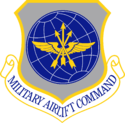 | |
|---|---|
|
54th Weather Reconnaissance Squadron Lockheed WC-130 in flight | |
| Active | 1944–1947; 1951–1960; 1962–1987 |
| Country |
|
| Branch |
|
| Role | Weather Reconnaissance |
| Part of | Military Airlift Command |
| Nickname(s) |
Fireball (1951-1960) Vulture (1962-1973) Typhoon Chasers (1973-1987)[1] |
| Engagements |
Pacific Theater of Operations Korean War[2] |
| Decorations |
Meritorious Unit Commendation Air Force Outstanding Unit Award[1] |
| Insignia | |
| 54th Weather Reconnaissance Squadon emblem (approved 29 November 1973)[1] |
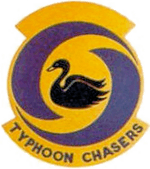 |
| 54th Weather Reconnaissance Squadron emblem (approved 9 July 1963)[1] |
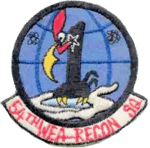 |
| 54th Strategic Reconnaissance Squadron emblem (approved 10 August 1951)[2] |
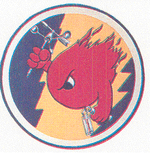 |
| 654th Bombardment Squadron emblem (approved 23 October 1944)[1] |
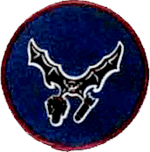 |
The 54th Weather Reconnaissance Squadron is an inactive United States Air Force unit. Its last assignment was to the 41st Rescue and Weather Reconnaissance Wing at Andersen Air Force Base, Guam, where it was inactivated on 30 September 1987.
History
World War II
Established in mid-1944 in England as a weather reconnaissance squadron; it was assigned to the Eighth Air Force. The squadron's primary mission was acquiring accurate weather information over enemy-occupied Continental Europe, including Nazi Germany for mission planning of heavy bombardment missions to identified enemy industrial, transportation and military targets. It flew a wide variety of medium bombers and fighter aircraft, all at high speed and unarmed over enemy-held territory on a daily basis. These missions were highly hazardous and usually flown without any escort. The squadron continued operations until the German capitulation in May 1945, when it returned to the United States.
Redeployed to North Field, Guam and issued very long range Boeing B-29 Superfortress bombers, it was fitted-out with weather reconnaissance equipment in September 1945. The unit flew weather reconnaissance missions for the Far East Air Forces during the early postwar years, inactivating in October 1947.
Korean War
It was reactivated in 1951 at Andersen Air Force Base, Guam. The squadron resumed its weather reconnaissance mission with WB-29s; upgrading to Boeing WB-50D Superfortresses in 1955. It often flew hazardous reconnaissance missions into tropical storms and typhoons to obtain accurate meteorological information. It was inactivated in 1960 due to budget reductions.
The squadron was reactivated in 1960 with a mixture of WB-50s, Boeing WB-47 Stratojets and Lockheed C-130 Hercules and resumed its typhoon hunting mission. The squadron was the last operator of the WB-50D Superfortress, retiring the last aircraft in 1965, when it operated C-130s.
Vietnam War
Perhaps its best accomplishment was during the Vietnam War when Operation Popeye (Project Popeye/Motorpool/Intermediary-Compatriot) was a US military cloud seeding operation (running from 20 March until 5 July 1972) to extend the monsoon season over Laos, specifically areas of the Ho Chi Minh Trail. Operating WC-130A aircraft flying out of Udorn Royal Thai Air Force Base, the operation seeded clouds with silver iodide, resulting in the targeted areas seeing an extension of the monsoon period an average of 30 to 45 days. As the continuous rainfall slowed down the truck traffic, it was considered relatively successful. The 54th Weather Reconnaissance Squadron carried out the operation to "make mud, not war."
Cold War
In 1974, a newly converted WC-130 (serial number 65-965) was sent to investigate Typhoon Bess. The crew departed Clark Air Base in the Philippines with the callsign Swan 38. Radio contact with the aircraft was lost on 12 October 1974, apparently as the aircraft was heading into the typhoon's eye to make a second position fix. There were no radio transmissions indicating an emergency on board, and search teams could not locate the aircraft or its crew. All six crew members were listed as killed in action.[3]
It was inactivated in 1987, along with its associated weather unit, Detachment 3, 1st Weather Wing. The aircraft were dispersed to the remaining weather reconnaissance squadrons, the 53d Weather Reconnaissance Squadron and the Air Force Reserve unit, the 815th Weather Reconnaissance Squadron, both at Keesler Air Force Base, Mississippi.
Lineage
- Constituted as the 654th Bombardment Squadron, Heavy (Reconnaissance, Special) on 17 July 1944
- Activated on 9 August 1944
- Redesignated 54th Reconnaissance Squadron, Long Range, Weather on 4 September 1945
- Redesignated 54th Reconnaissance Squadron, Very Long Range, Weather on 27 November 1945
- Inactivated on 15 October 1947
- Redesignated 54th Strategic Reconnaissance Squadron, Medium, Weather on 22 January 1951
- Activated on 21 February 1951
- Redesignated 54th Weather Reconnaissance Squadron on 15 February 1954
- Discontinued and inactivated on 18 March 1960
- Organized 18 April 1962[4]
- Inactivated on 30 September 1987[5]
Assignments
- 25th Bombardment Group (Reconnaissance), 9 August 1944
- Third Air Force, 8 September 1945
- 311th Reconnaissance Wing, 27 November 1945 (attached to the Twentieth Air Force, 8 December 1945 – 28 February 1946
- Military Air Transport Service, 13 March 1946
- Air Weather Service, 20 March 1946
- 43d Weather Wing, 1 August–15 October 1947
- 2143d Air Weather Wing, 21 February 1951
- 1st Weather Wing, 8 February 1954
- Department of the Air Force, 18 March 1960 (not organized)
- Military Air Transport Service, 8 February 1962
- 9th Weather Reconnaissance Group, 18 April 1962[4]
- 9th Weather Reconnaissance Wing, 1 July 1965
- 41st Rescue and Weather Reconnaissance Wing, 1 September 1975 – 30 September 1987[5]
Stations
- RAF Watton (AAF-376),[6] England, 9 August 1944
- Drew Field, Florida, August 1945
- North Field, Guam, 27 November 1945
- Buckley Field, Colorado, 20 March 1946
- Langley Field, Virginia, 2 June 1946
- Morrison Field, Florida, 21 Jul 1946-30 Jun 1947
- McClellan Field, California, 1 July 1947
- Fairfield-Suisun Army Air Base, California, 31 July 1947
- North Army Air Base, Guam, 2 August–15 October 1947
- Andersen Air Force Base, Guam, 21 February 1951 – 18 March 1960
- Andersen Air Force Base, Guam, 8 February 1962 – 30 September 1987[4][5]
Aircraft
- North American B-25 Mitchell, 1944
- De Havilland Mosquito XVI, 1944-1945
- Martin B-26 Marauder, 1944-1945
- Lockheed P-38 Lightning, 1944-1945
- Boeing B-29 Superfortress, 1946-1947; 1951-1956
- Boeing WB-29 Superfortress, 1946-1947; 1951-1956
- Douglas C-47 Skytrain, 1946-1947
- Douglas C-54 Skymaster, 1951-1960
- Boeing C-97 Stratofreighter, 1952-1953
- Boeing TB-50 Superfortress, 1955; 1955-1960
- Boeing WB-50 Superfortress, 1955; 1955-1960
- Boeing WB-47 Stratojet, 1962-1965
- Lockheed C-130 Hercules, 1962-1965
- Lockheed WC-130, 1965-1987
References
- Notes
- 1 2 3 4 5 Markus, et al., p. 143
- 1 2 Maurer, Combat Squadrons, pp. 697-698
- ↑ Tom Robison. Whiskey-Charlie! Retrieved on 2008-09-26.
- 1 2 3 Lineage, including assignments and stations through 1963, in Maurer, Combat Squadrons, pp. 697-698
- 1 2 3 Lineage, including assignments and stations from 1963 through 1987, in Markus, et al., p. 143
- ↑ Station number in Anderson.
Bibliography
![]()
- Anderson, Capt. Barry (1985). Army Air Forces Stations: A Guide to the Stations Where U.S. Army Air Forces Personnel Served in the United Kingdom During World War II (PDF). Maxwell AFB, AL: Research Division, USAF Historical Research Center. Archived from the original (PDF) on 23 January 2016. Retrieved 7 July 2012.
- Markus, Rita M.; Halbeisen, MSG Nicholas F.; Fuller, John F. (1987). Matthews, James K.; Gustin, Joylyn I., eds. Air Weather Service: Our Heritage 1937-1987 (PDF). Scott AFB, IL: Air Weather Service. OCLC 18406969. Retrieved June 10, 2017.
- Maurer, Maurer, ed. (1983) [1961]. Air Force Combat Units of World War II (PDF) (reprint ed.). Washington, DC: Office of Air Force History. ISBN 0-912799-02-1. LCCN 61060979. Retrieved December 17, 2016.
- Maurer, Maurer, ed. (1982) [1969]. Combat Squadrons of the Air Force, World War II (PDF) (reprint ed.). Washington, DC: Office of Air Force History. ISBN 0-405-12194-6. LCCN 70605402. OCLC 72556. Retrieved December 17, 2016.
